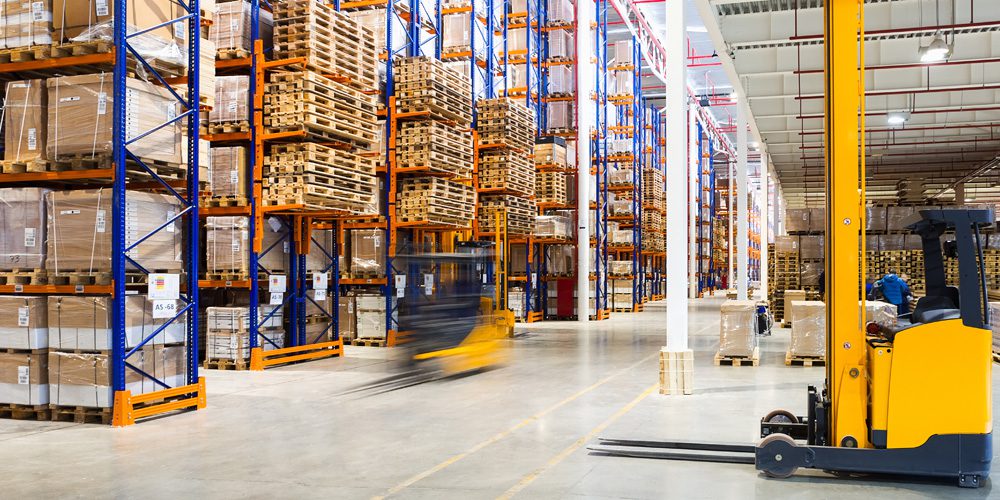Home » 5 lessons to keep your supply chains running
5 lessons to keep your supply chains running

At the Roadmap to Digital Transformation series kick-off, leaders in logistics shared their advice in navigating the ongoing supply chain disruptions.
For business owners and consumers alike, the pandemic laid bare just how vital supply chains are to business. And with the current economic headwinds, there’s no immediate end in sight to the disruptions in the market. The new normal is anything but.
While labour productivity in Canada rose by 0.2 percent in the second quarter of 2022 — the first increase since the start of the pandemic — there is still a lot of catching up to do. To remain competitive, companies need to create meaningful gains in productivity, and that means taking on new initiatives and embracing new technologies, even in these risk-averse times. When it comes to digital transformation, it’s clear it needs to be a priority.
“But for many organizations, it’s a challenge to cut through all the noise to leverage emerging technology,” says Michelle Peng Greenberg, the director of software ecosystem at MaRS. That was the driving impetus behind the Roadmap to Digital Transformation Series. This new series of workshops and expert panel discussions identifies how businesses can adopt emerging technologies to gain competitive advantage. “It’s critical for leaders to gain insights on where the new sources of innovation will come from,” says Peng Greenberg. “And how to best implement these solutions.”

The series kicked off with a closed-door discussion, moderated by Plug and Play’s Harvey Williams, in which industry leaders offered up best practices and lessons learned in dealing with supply chain snarls. And then the first panel discussion of the series was held at the recent MaRS Supply AI Summit, bringing together specialists whose expertise covers the supply chain spectrum, from investments and venture capitalism to data procurement and product management. These industry leaders identified supply chain bottlenecks, available solutions and the urgent need for digitization.
So what needs to be top of mind for business leaders? Here’s what industry leaders have to say:

You’re only as good as your data
“Data is absolutely critical. Subpar data leads to subpar insights, which leads to subpar outcomes,” says Stephany Lapierre, co-founder and CEO of Tealbook, a Toronto-based venture that uses AI and machine learning to gather and refine supplier data to help streamline supply chains. Lapierre points out the old way of doing things is just that — out of date. For a business, updates from suppliers simply aren’t happening at the speed or scale required to remain competitive. “The focus for us is flipping that model upside down to centralize data, enrich it continuously and distribute it across all the systems,” says Lapierre.

Keep your eyes on the road ahead
Industry leaders need to put the pandemic in the rear view mirror and focus on what’s coming. “We’re already thinking three to five years ahead to ensure our capabilities can sustain our businesses,” says Brett Huttman, head of corporate strategy and product management for Purolator. Lapierre echoed this sentiment, saying corporations need to adapt to the fluctuations in the market. “Now with inflation, the priority is risk and cost savings,” she says. “The enterprises that are going to thrive are the ones that are the most prepared.” Often, these preparations come in the form of pilot projects — where businesses collaborate with startups to implement cutting-edge solutions. Harvey Williams, a principal at Plug and Play, a platform that connects companies with capital and innovative tech, is heavily focused on pilot projects. “Part of our business is really focused on implementing external innovation by working with startups,” he says. Purolator is so dedicated to this practice that it set up a digital lab in the Waterloo region that develops, as Huttman puts it, “really cool technology we bring into the mothership.”

Gain greater visibility
Having a better understanding of the flow of parts and materials can have long-term strategic benefits. Not only can this information help identify efficiencies and areas that are underperforming, it can also help companies proactively deal with emerging issues and address priorities. Adithya Sreekumar, an investor with Radical Ventures, says business leaders need to start asking their suppliers such questions as “Do our vendors have cybersecurity, environmental, labour or management issues?” It’s important, he adds, for leaders to be risk-aware and find viable alternatives.

The push for greater sustainability
Companies aren’t just aiming to bolster their supply chains; they’re looking to completely redefine them altogether. Sustainability is no longer just a priority, it’s a prerequisite. “It’s more of a must-have — it’s becoming less about compliance and more of a brand promise,” says Huttman. Today, it’s fast becoming the industry standard to include emissions stipulations in customer contracts or requests for proposals. Specifically, when it comes to logistics, businesses are using carbon capture solutions to offset emissions from their fleets of trucks and ships. Sreekumar, adds that investments in sustainable supply chains are turning a profit. “For the last five years, sustainability was driven by PR, consumer demands and shareholder activism,” he says. “What we’re seeing now are things like carbon capture and carbon credits playing a bigger role — you’re seeing certain KPIs that could actually be converted into profitable businesses.”

Innovation is a team effort
The world is experiencing a series of overlapping crises. To deal with climate change, inflation, economic downturns, labour shortages, geopolitical instability and the ongoing pandemic, corporations and startups need to collaborate. Williams says that collaboration is already translating to action. “Everyone’s collective knowledge of the supply chain and logistics space has been elevated, and now we can speak more quickly about the more complex problems,” says Williams. “We’re starting to see that collaboration happen,” says Sreekumar. Every business, no matter what they do or what they sell, is connected to the global supply chain. Lapierre’s message? Don’t get lost in becoming your own data company. “It’s really hard and it’s very expensive,” she says. “There’s a lot of companies that are building amazing technology — that’s all they focus on. Partner with someone that’s already investing and focusing on solving that problem, and if you make that company better you’re going to benefit from it as well.”
Learn more about how the Roadmap to Digital Transformation Series can help your business.
MaRS Discovery District
https://www.marsdd.com/
MaRS is the world's largest urban innovation hub in Toronto that supports startups in the health, cleantech, fintech, and enterprise sectors. When MaRS opened in 2005 this concept of urban innovation was an untested theory. Today, it’s reshaping cities around the world. MaRS has been at the forefront of a wave of change that extends from Melbourne to Amsterdam and runs through San Francisco, London, Medellín, Los Angeles, Paris and New York. These global cities are now striving to create what we have in Toronto: a dense innovation district that co-locates universities, startups, corporates and investors. In this increasingly competitive landscape, scale matters more than ever – the best talent is attracted to the brightest innovation hotspots.


